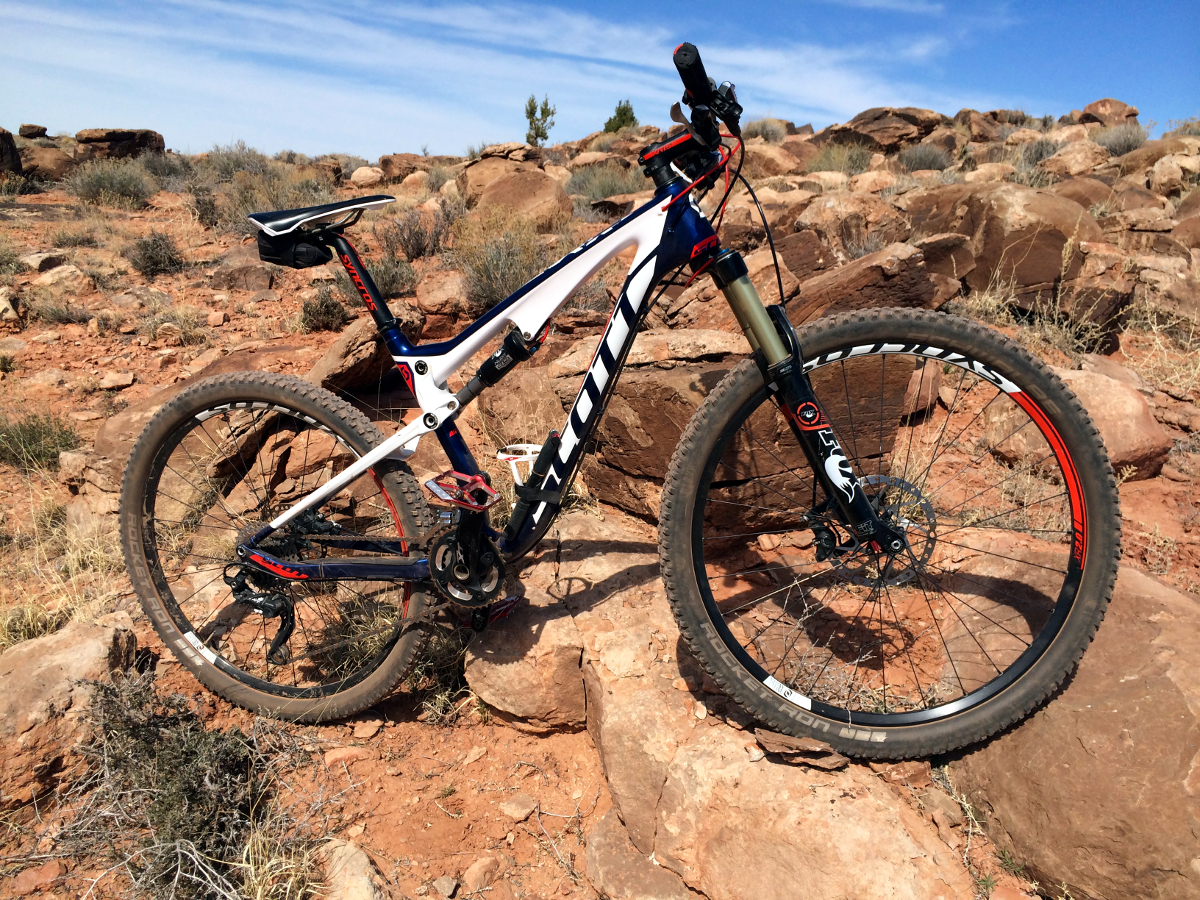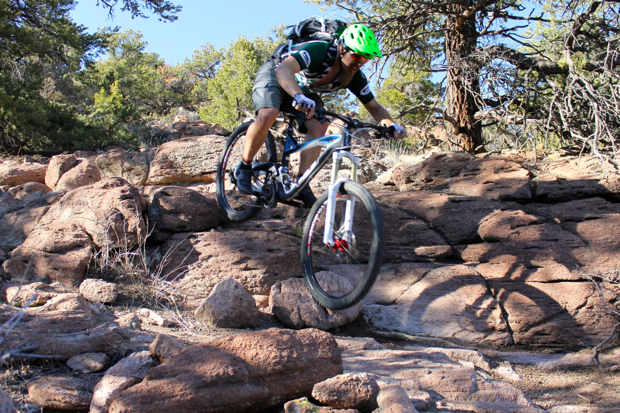 Cross-country bikes are typically known for their speed. This is accomplished by designing a bike with shorter suspension, long top tube, steep head tube angle, and efficient pedaling. Unfortunately, not all cross-country trails know that they are supposed to be free of technical terrain. Attacking large drops and rock gardens on a traditional XC bike for hours upon hours can be bone-jarring, teeth-shattering, and leave you feeling like you need to upgrade your bike to an enduro-style bike just to survive another pass through a rock garden. A steep head tube angle can be particularly precarious while descending on hour 11 of your 12-hour XC race. The Scott Spark 710 was designed for the XC rider who can still appreciate and enjoy a trip down a black diamond trail called “Deadman’s Loop.”
Cross-country bikes are typically known for their speed. This is accomplished by designing a bike with shorter suspension, long top tube, steep head tube angle, and efficient pedaling. Unfortunately, not all cross-country trails know that they are supposed to be free of technical terrain. Attacking large drops and rock gardens on a traditional XC bike for hours upon hours can be bone-jarring, teeth-shattering, and leave you feeling like you need to upgrade your bike to an enduro-style bike just to survive another pass through a rock garden. A steep head tube angle can be particularly precarious while descending on hour 11 of your 12-hour XC race. The Scott Spark 710 was designed for the XC rider who can still appreciate and enjoy a trip down a black diamond trail called “Deadman’s Loop.”

Very few trail systems across the nation only cater to one style of riding. And while having several mountain bikes is always the best choice, it is not always the most practical. Sometimes you need a jack-of-all-trades bike. A short time on trails in Moab with this bike made it quite clear that I have found my next XC bike, one that will allow me to podium on my XC race one weekend and shred Sedona the next weekend.
The Specs from Scott
- Carbon frame, tapered headtube
- Travel: 120mm of front suspension, Rear 120 – 85 – Climb / Shock 190 × 50
- FOX 32 Float Factory CTD Air
- FOX Nude / SCOTT custom with travel / geometry adjustment in 3 modes: Climb – Traction Control -Descend
- SCOTT TwinLoc Remote Technology, with 3 modes (front and rear) with integrated grip clamp
- Hubs: Syncros XR2.0
- Full Shimano XT drivetrain
- Weight without pedals: 24.9lbs
As I mentioned, the Scott Spark 710 comes with 120mm of travel. This is a nice increase over the standard XC design that typically centers around 100mm of travel. It gave the Spark a better ability to descend and soak up drops and technical features. Scott’s patented TwinLoc system gives the rider the ability to tune the suspension on the fly, with a setting for both 120mm and 85mm of rear travel. Need increased pedal efficiency on a climb? A quick click of the TwinLoc allows you to leave your competitors in the dust. About to hit a 3-foot kicker or a gnarly drop? Switch back to 120mm of travel.

Depending on your setting of the TwinLoc, you can also change the headtube angle from 68.3 degrees to 68.8 degrees. Both, however, are slacker than you you will find on a conventional XC bike, which typically runs 70 to 70.5 degrees. I was a bit skeptical about the addition of yet another lever on the handlebars at first. However, the lever for the shock was surprisingly pleasant to use compared to other auto-adjusting technologies.

Bottom Line
The Scott Spark 710 was extremely responsive when pedaling and climbed like a beast. It attacked technical terrain unlike other XC bikes I have ridden. Honestly, 5 to 10 years ago a bike with 120mm of travel and a headtube angle of ~68.5 degrees would have qualified for an all-mountain bike. With that said, hands-down this bike would make a phenomenal XC race bike.
MSRP: $5,200






















0 Comments